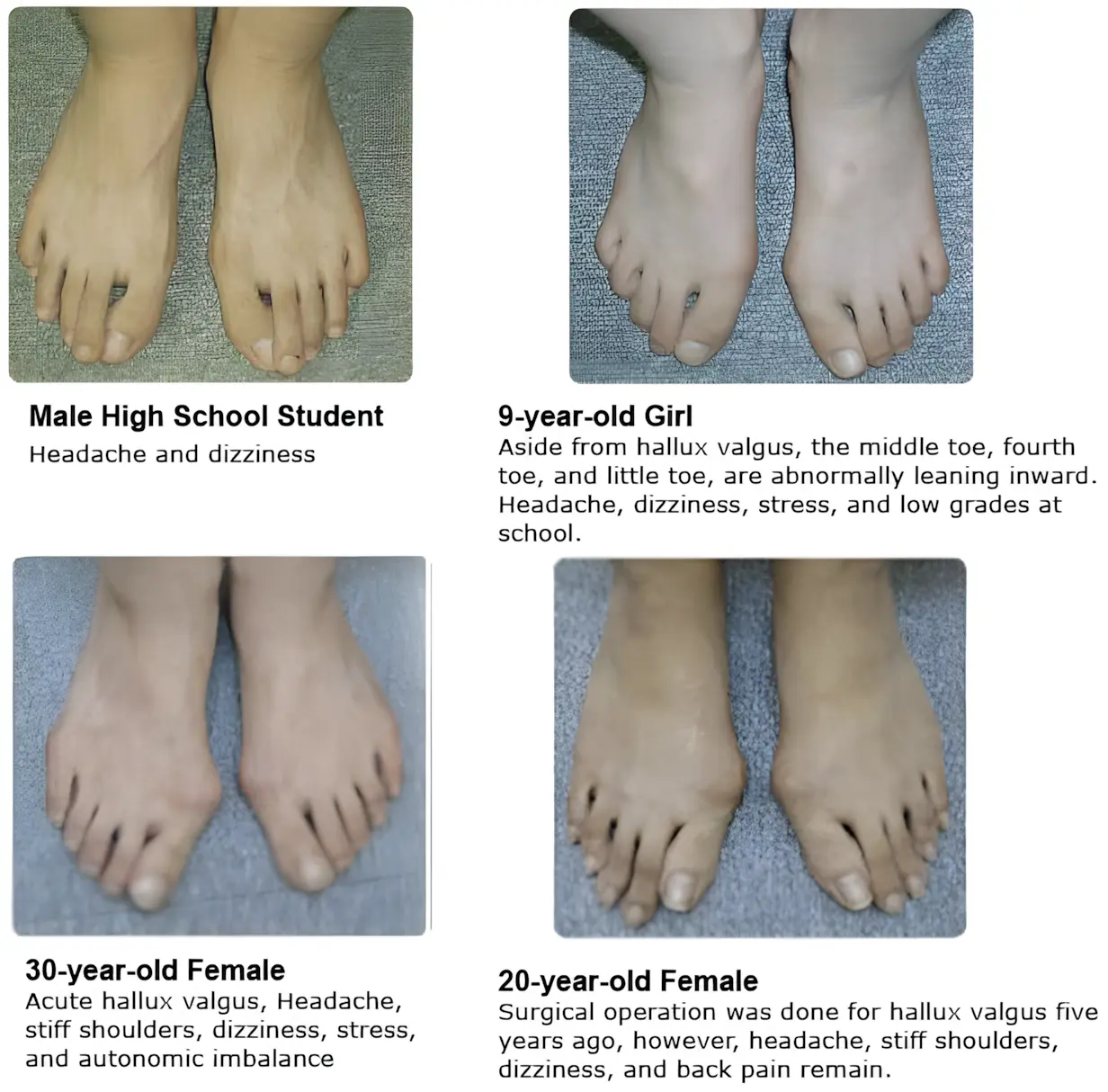Hallux Valgus (Bunion Deformity) Can Make You Sick
Updated: September 19, 2025
Hallux valgus, a deformity of the big toe more commonly known as a bunion, can negatively affect your health. This condition affects people of all ages and is becoming a common problem worldwide, especially in modern societies.
To understand why this is a concern, just take a look at these pictures:


The Link Between Fashion and Foot Health
Millions of young women in the modern world suffer from hallux valgus. Don't you think it is caused by the misleading fashion world? Avoid high-heeled fashion shoes. They do not look beautiful at all!
Women who suffer from deformed feet (hallux valgus) are also affected by various illnesses and poor brain function, and they receive lower grades in school.
A Lesson from History
The idea of shaping feet to fit a certain beauty standard is not new.
A well-known example is the tradition of foot-binding in China, which was a practice that lasted for centuries, from roughly the 10th century until the early 20th century. Historical data suggests that this practice negatively affected women's overall health and mental function, and many lived shorter lives.




Similarly, in 17th and 18th century Europe, people were influenced to believe that big feet were for laborers among the lower classes and that small, ballerina-style feet were considered a sign of high society. Historical records show that many women from upper-class families suffered from foot deformities as a result of wearing tight, narrow shoes.


Simple Steps for Prevention and Correction
The good news is that there are ways to prevent and correct this deformity.
For Prevention:
If you are young and your feet are still healthy, you can take steps to prevent bunions. Try to wear sandals or shoes with a wide toe box as often as possible. We recommend wearing comfortable shoes like sandals in the house, at the office (if your workplace allows it), and during your commute.
In fact, I use sandals with straps, as you can see in the illustration below. This is one way to keep myself healthy. Do you want to see my feet? They are in excellent shape.


For Early-Stage Deformity:
If you notice your toes are just beginning to deform, switching to healthier footwear now can make a big difference. We recommend using sandals immediately to stop the condition from getting worse.
For Severe Deformity:
If your toes are already severely deformed, it is best to consult a doctor to discuss the right treatment for you.
Remember, taking care of your feet is important for your overall health and lifestyle. Don't ignore the signs of hallux valgus or bunion!
Reprint Rights: You may reprint this article within your website, blog, or newsletter as long as the entire article remains the same as well as the “About the Author” box.



 Junji Takano is a Japanese health researcher involved in investigating the cause of many dreadful diseases. In 1968, he invented PYRO-ENERGEN, the first and only electrostatic therapy machine that effectively eradicates viral diseases, cancer, and diseases of unknown cause.
Junji Takano is a Japanese health researcher involved in investigating the cause of many dreadful diseases. In 1968, he invented PYRO-ENERGEN, the first and only electrostatic therapy machine that effectively eradicates viral diseases, cancer, and diseases of unknown cause.


